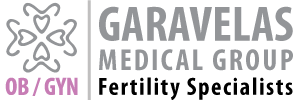• What is a poor ovarian response?
• Ovarian stimulation in poor respondents
• Which woman is described as a “poor respondent”?
• Can a poor ovarian response be predicted?
• Low ovarian potential – How do we deal with it?
What is a poor ovarian response?
The development and maturation of multiple follicles are essential for achieving IVF pregnancies.
A significant proportion of women, however, who undergo ovarian stimulation in addition to assisted reproduction do not adequately respond to standard ovarian stimulation protocols with a significantly reduced number of developing follicles.
These women are defined as “poor responders” and usually show reduced oocyte counts, low fertilization rates, poor fetal quality and, consequently, low pregnancy rates.
Poor ovarian response occurs in 9-24% of women undergoing ovarian stimulation and requires a special therapeutic approach and treatment.

Ovarian stimulation in poor respondents
Until recently, there was no understanding of the definition of “poor ovarian response”, resulting in significant difficulty in assessing the effectiveness of various methods of treating poor ovarian response based on relevant published studies.
Various criteria have been used to define “poor ovarian response” most importantly the number of developing follicles, the number of oocytes obtained and the serum estradiol levels in response to ovarian stimulation.
Also, the various definitions may be retrospective or prospective depending on whether the poor ovarian response was observed in previous cycles or whether it was expected in subsequent ones based on the poor ovarian reserve, the woman’s advanced age, previous ovarian surgeries, etc.
Which woman is described as a “poor respondent”?
Recently, in an attempt to establish a universally accepted definition of “poor ovarian response”, it was suggested that: a woman be classified as a “poor responder” if at least two of the three criteria are present:
a) advanced age of the woman (≥ 40 years) or the presence of another risk factor for poor ovarian response;
b) previous poor ovarian response (≤ 3 oocytes after conventional ovarian stimulation protocol)
c) abnormal ovarian reserve (Mϋller pore inhibitory hormone (AMH) 0.5-1.1 ng / ml).
Two episodes of poor ovarian response after maximal ovarian stimulation are considered sufficient to characterize a patient as a “poor responder” in the absence of advanced age or abnormal ovarian reserve.
Causes of poor ovarian response include a woman’s advanced age, previous ovarian surgery, pelvic adhesions, and increased body mass index. However, a poor ovarian response can also occur unexpectedly, reflecting premature ovarian aging.
Predicting the ovarian response of an IVF cycle would contribute significantly to the early identification of “poor responders” in order to specifically address and modify their stimulation protocols.
Can a poor ovarian response be predicted?
As a result, the question arises as to whether a poor ovarian response can be predicted. In this light, various indicators have been proposed, such as FSH, estradiol (E2), inhibitory B and AMH.
Elevated serum FSH concentrations on the second or third day of the menstrual cycle have been associated with reduced pregnancy rates while FSH levels> 20 IU / L in at least two cycles are associated with a low probability of pregnancy.
In addition, it has been suggested that AMI could be a new indicator of ovarian response, as its low concentrations occur earlier than all other indicators associated with ovarian aging.
Low ovarian potential – How do we deal with it?
Dealing with poor responders remains to this day a challenge in the field of assisted reproduction.
The options given to a woman who has a reduced ovarian supply and is a poor respondent, ie does not respond to IVF drugs are:
The natural IVF cycle, although it has its difficulties, has been an excellent tool in the hands of an experienced IVF specialist.
Ovarian rejuvenation (PRP PLATELET RICH PLASMA) is a new experimental process that helps in the natural production of oocytes in the ovaries. It is a worthwhile alternative to egg donation. In addition it offers hope to women who are in advanced reproductive age and have a reduced number and usually poor quality eggs.
Essentially, however, the choice with the highest pregnancy rates is egg donation. It is a simple medical technique but a complex process both emotionally and psychologically for the couple who will decide to make this choice.
Of course, the couple should try circles with their own egg before proceeding with the solution of the borrowed egg.
But the message I have to convey as a scientist and a human being is simple and lies in the fact that in no case can the achievement of pregnancy be ruled out, whatever the image of ovarian function.
For this reason, patients undergoing individualized assisted reproduction therapy, knowing the reduced presence and functionality of their eggs, should be supported and encouraged in this decision.
Dr. Athanasios V. Garavelas
MD, MSc.MMSc, Phd
Master Degree of Pregnancy and Pathology
Master Degree Assisted Reproduction
IOLIFE Scientific Associate
